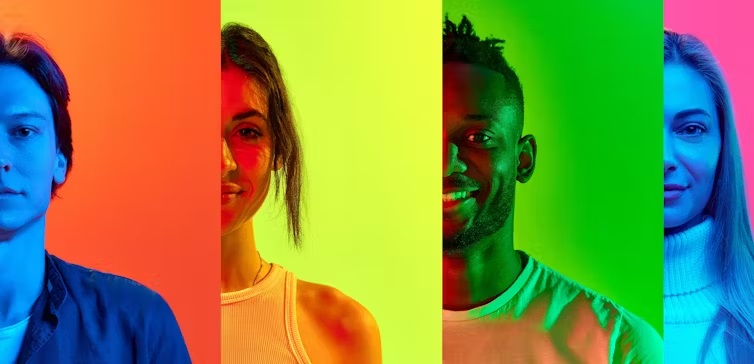Shutterstock/Anton Vierietin
by Willi Zhang, Karolinska Institutet
Nearly 16% of people changed their sexual identity over a 12-year period, according to a new study I conducted with my colleagues, involving around 35,000 residents of Stockholm County. This challenges long-held beliefs about sexual identity being largely fixed.
Between 2010 and 2021, we found that 15.7% of people aged 18 and older in Stockholm experienced shifts in their sexual identity. Bisexual people had a high rate of change, with 52% reporting a shift during the study period. Within this group, 33% changed to identifying as heterosexual in 2014 or 2021 and 9% moved towards a homosexual identity.
Homosexual people followed at 36%. Within this group, 26% changed to identifying as heterosexual in 2014 or 2021 and 7% shifted to a bisexual identity.
Heterosexual people had a much lower rate of change at 7%. Notably, about half of those identifying as bisexual in 2021 had previously identified as heterosexual in 2010.
Similar patterns have been observed internationally. In countries like Australia, New Zealand, the UK, and the US, studies report that between 5% and 30% of people changed their sexual identity over various time periods.
These findings challenge the common belief that sexual orientation is biologically predetermined and unchanging throughout life. While sexual orientation broadly includes how people identify themselves, who they’re attracted to, and how they act on those feelings, these studies show that sexual identity can evolve over time.
This may be influenced by personal experiences, relationships and shifts in societal attitudes, such as a growing acceptance of different types of relationships.
What is sexual identity?
Sexual identity refers to how people perceive and label their own sexuality – whether they consider themselves heterosexual, homosexual, bisexual or another identity. It’s based on personal attractions, experiences, and understandings. It can change over time and is not always fixed from birth.
For example, I identify as gay, but that wasn’t always the case. Growing up, I assumed I was heterosexual, because everyone around me – family, friends, classmates – seemed straight. That changed when I went to college at 17, where I became close friends with a male classmate.
Over time, I started to like him in a romantic way. I was both excited and scared, questioning who I was and how I wanted to live my life. It took two years of self-exploration to understand and accept my new identity as gay. A personal journey like this is one of many examples of how life experiences and self-discovery can shape one’s understanding of their sexuality.

Shutterstock/Jacob Lund
Why it matters
Societal attitudes play a crucial role in whether people feel safe being open about their sexual identity. While increased visibility of LGBTQ+ people in media and public life has led to a more accepting environment, polarisation in social acceptance of LGBTQ+ people continues. At the same time, many view sexual identity as fixed.
These negative attitudes and fixed views reinforce sexual stigma and prejudice, leaving people afraid to express themselves and fearful of judgement or discrimination. By raising awareness about the natural fluidity of sexual identity, we can help break down these barriers and create a more inclusive society where people feel safe to express who they are as their identities evolve.
Schools and community programs can include discussions about the fluidity of sexual identity to promote understanding and acceptance. Understanding that sexual identity can change over time, particularly among younger people, can help reduce stigma and cultivate a more supportive learning environment.
People experiencing changes in their sexual identities may face health challenges, such as emotional distress, depressive symptoms, or difficulties with tobacco or alcohol use. Our research indicates that bisexual and homosexual people are most likely to experience such changes.
It would help if healthcare workers, particularly those supporting the LGBTQ+ community, are aware of this. Knowing about these challenges could help them adapt their care to better support those with evolving identities.
Recognizing that sexual identity can change is also relevant for shaping inclusive laws and regulations. People who transition from one sexual identity to another may face doubt, judgement or even victimization.
Protections could then be expanded to include not only a person’s current sexual identity but also changes in their identity, which may better help combat discrimination. In addition, promoting mental health services tailored to those navigating changes ensures that support is accessible to those who need it.
By fostering inclusive attitudes, policies, and support systems, people can feel safe and supported to explore and define their sexual identities authentically. As society continues to evolve in its understanding of sexuality, acknowledging the fluid nature of sexual identity can help increase acceptance of diversity and empower people to live openly and confidently as their true selves.
Willi Zhang, Postdoctoral Researcher, Department of Global Public Health, Karolinska Institutet
This article is republished from The Conversation under a Creative Commons license. Read the original article.

